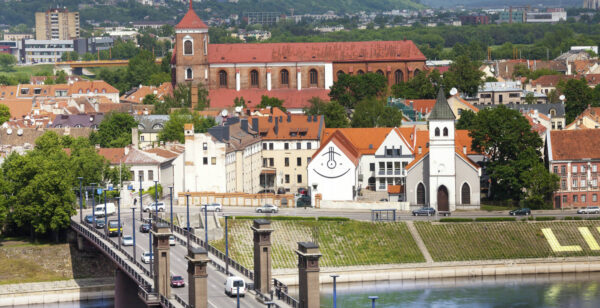
How does a small country weather the tumultuous history of Europe while maintaining its culture, identity and language? How does it navigate through wars, occupation, annexations and the commotion of the 20th and 21st centuries while continuing to evolve as a society?
Lithuania is a small, Northern European country on the Baltic Sea, known as one of the Baltic republics together with Latvia and Estonia. It counts a little over 3 million people with 600,000 living abroad.
The history of Lithuania is not very different from that of other communities caught in the power struggle that ravaged and shaped the European panorama over the centuries. What is unique, in my opinion, is how Lithuania managed to resist and come back with its own identity and language basically intact in the 20th century.
To understand the resilience of the Lithuanian language, we need take a brief look at this country’s turbulent history.
Lithuania can trace its own distinct, separate identity, back many centuries. Its first settlers were old Indo-European peoples that, due to geographic isolation, were able to keep their traditions and language relatively unchanged. These first Baltic tribes arrived around 3,000BC and organized themselves into a state, which resulted in the creation of the Lithuanian Grand Duchy in the 13th century. The Grand Duchy lasted until the 16th century when Lithuania united with Poland.
Here begins the influence of foreign powers on Lithuania and its language. For two centuries, Lithuania and Poland formed a commonwealth and Lithuania went through a renaissance of the arts, culture and language. During this time period, language use came to be defined by class: the Polish language was predominant among the nobility while Lithuanian remained inuse by the peasants.
The Lithuanian language took another blow during Russian Imperial Rule (1795-1918) when its use was basically banned in favor of Russian. Printed material could only be in Russian and schooling was conducted in Russian.
During the Russian rule, a powerful national revival movement started. What’s interesting in this chapter of Lithuanian history is that the rebel Polish-speaking nobility needed the help of the Lithuanian-speaking peasants to fight the Russians. As the rebels became more and more influential politically, the Lithuanian language returned as the national language and helped the Lithuanian people identify themselves again as an ethnicity speaking the same language.
In 1940, Lithuania was annexed to the Soviet Union and became an occupied country with an occupied language. Lithuanian was not banned, fortunately, but Russian was the de facto language of innovation — all novelties, news and education came to Lithuanians through Russian. But Lithuanians did not abandon their language or their dream of becoming a small, independent country again. Indeed, they were the first country to declare their independence from the USSR in 1990.
Today, Lithuanian (along with Latvian) is one of the closest living languages to Proto Indo European — the “mother” language from which all Indo European languages derive. Remarkably, Lithuanian is as close to this original language as Latin, Old Greek or Sanskrit. In contrast, languages like French, English and German have undergone many more changes throughout the centuries. That’s why you will hear that Lithuanian is an “old” or “conservative” language.
What I admire about this story is how Lithuanians managed to preserve their language and cultural identity in the face of great adversity. They never relinquished their dreams of freedom or allowed their language to be extinguished by occupying forces.
Newly independent, Lithuanians found a way to adapt to a world that had changed dramatically during their many occupations, reinventing themselves as a republic and a free people. In the same way, they managed to adapt their language to a new, open world. Translators were trained in English and other source languages instead of Russian. The Language Academy invented terms in Lithuanian to avoid importing loads of English or foreign words. New Lithuanian terminology was born almost overnight.
For a language that was not accustomed to change and the “deformations” that it can bring, Lithuanian’s pace of adaption to modern times is remarkable. Some find this exciting, others worrisome. The debate will surely continue for some time. I look forward to seeing what the future holds for one of the world’s most resilient languages.
I’d like to extend special thanks to Lithuanian oncologist Jurgita Carbone who contributed to this blog post.
Insights for global growth






Power your strategic growth
Go beyond tactical localization with tailored, strategic solutions that resonate locally and drive growth globally.
Get started